I tend not to write about buying real estate in Turkey on this site, it’s a massive and complex subject and when I write about it I do tend to have the feeling that I am, for want of a better phrase, pissing in the wind! Twelve years experience of property in weird places tells me most people would far rather spend 15 minutes dreaming about a place in the sun than five minutes learning how to acquire one legally.
So I leave the property writing to people who have a vested interest and either pay professionals to produce disingenuous pieces that are really adverts or sling together their own poorly written “article” where not a single sentence actually makes sense.
But the other day I read a (good) article in Zaman (English language newspaper in Turkey) by an American ex-pat who dreamt of buying an old Ottoman house in a village and turning it into a little guest house. The dream rapidly crumbled under the weight of the problems of buying in the villages. And the article, quite rightly, ended with a clear warning to those who consider the idea – be careful, be very careful!
Personally I think it is essential to warn people about the issues peculiar to buying in the villages (or indeed anywhere), but equally I think you need to go on to tell people how they can overcome the hurdles because it isn’t impossible and I have done it twice.
Now I have as much space as I like here because I own the website – ha, no sub editors – And I can rattle on a lot longer than the lady writing in Zaman, so here’s some information about buying property in the koy lands, it isn’t exhaustive, but it is relevant to non Turkish citizens and it is current as of today, October 2010, it may of course all change tomorrow!
What is a koy?
Koy is Turkish for village, and in most cases the koy rules covers the village itself and the surrounding farmland and gardens. Most villages are nuclei, tightly built around a crossroads or a mosque or a meeting place and the streets are narrow (the rule was, wide enough for two camels to pass abreast), the houses themselves have small kitchen gardens or courtyards and the villagers planted their main crops and grazed their animals in the fields around the koy and went back to the safety of the community at night.
The koy have a special place in Turkish law, they are run by an elected head man, the Muhtar, with his council of elders. Even now the Muhtar wields quite extraordinary power over planning, development and living in the village. He sets the water rates, decides who gets water and power, gives permission for extensions to homes and troubleshoots any disputes.
(I need to add a caveat here about planning permission, just for clarity – whilst the Muhtar has a lot of say in planning permission and can veto an application if he feels it isn’t for the good of the village he isn’t the only authority involved. A simple extension upwards he can just rubber stamp but if you are extending outwards or building a new property you still need to have any design passed by the planning gods in Aydin, you will need a geo survey and you still need to build it according to building regs – of course we have them! – and you need to use legitimate workers and prove SSK was paid. If you are extending a property and it is outside of the original footprint on the tapu you will also need to go through the whole process of getting the final building passed and mapped onto your tapu)
If you move to a village or want to move to a village you should introduce yourself to the Muhtar. If you are thinking of buying bare land and building anywhere near a village you really should introduce yourself to the Muhtar – he’s the one who is going to tell you to bugger off!
You often pay to join a village community. The amount you pay, and it varies a great deal, goes towards community projects like paving the streets, renovating water troughs and renewing dustbins. I paid 500tl when I first joined this village back in 2005; I still have the receipt somewhere, because everything is carefully receipted by the Muhtar who spends his life ensuring he is as pure as Caesar’s wife in the eyes of his village.
So the koy is a real democratic community, it houses the villagers, looks after the land around the village and its continuing existence is very important to Turkish culture.
Foreign individuals are currently prohibited from owning land or property in the koy lands. So basically, as an individual, you will be refused military permission if you try and buy in the koy lands.
How can I own property in the koy lands?
There is only one way a foreigner can own property in the koy lands and that is via a company. Let’s be clear though, it has to be a real company, not a shell company. It has to have a purpose for which owning the property is essential.
When I first came here it was permissible for foreigners to buy in the villages, and many did, but they cannot now sell their properties to other foreigners. And then the laws changed and you had to have a company, so people formed shell companies under Turkey’s Foreign Direct Investment laws (I’m not going into detail on the FDI laws, I’d be here all day!) and did nothing but live in their properties and didn’t contribute to the economy. And now, the law has altered slightly again and you have to have a legitimate company where ownership of the property is part of the business you conduct.
None of these changes ever affected me because all that time the rules were changing I was quietly going about my business. I set up a company to build The Muses House hotel in the village and that was a working company and still is. When I set up a company to buy my current house the work of the company was building restoration and tourism (amongst 300 other things!) so the company did what it said it would do, it restored this house and now I rent out part of it allowing people to experience the village. If my husband hadn’t passed away we would have renovated more. Both of my companies, including this current one, have employed people, paid SSK, paid taxes and operated.
So when I sell this house, if the buyer is foreign, I simply transfer the shares to the new owners and they own a real legitimate company. Given the changes in the law over the years I would imagine that in the whole of Turkey there are only a handful of foreign owned companies with property in the koy lands who can actually do that.
For anyone else forming a new company to buy a property in the koy lands you will need a legitimate purpose and you will need to prove that to the tax office and the chamber of commerce. You will also need to obtain permission from the local administrative centre, in this county that is Aydin. Anyone who tells you differently is being disingenuous and whilst they may say you will get permission this is because they know someone who is prepared to be “flexible” to get stuff through for you and personally, I always think, flexible people can go either way depending on which way the wind is blowing and that’s not something I would want to rely on long term.
Back in 2005 when foreign companies bought property or land they were treated in the same way as Turkish citizens and the transaction took a day and permission, military or otherwise, wasn’t necessary. That is no longer the case. Now a foreign company wishing to acquire real estate has to submit an application to a committee. It isn’t strictly speaking military permission that is being applied for although the military are consulted as part of the process, rather it is an assessment of need – does this company need this particular property to carry out its business?
So far I haven’t heard of any company being denied permission but my sample group is statistically null as it consists of two instances since the law changed in November 2008! And it does take time, quite a lot of time currently as the process is relatively new. As the committee becomes more familiar with the process it will speed up but right now it takes about three months, during which time you would be wise not to do anything to increase the value of the property you are buying but don’t yet own.
So what about the properties themselves?
Complicated isn’t it! Right, you have set up a company, it has a purpose, you are prepared to prove that purpose when you go to acquire real estate in the koy lands and you are prepared to wait up to three months for approval – what about the properties themselves?
I’m going to mainly ignore the whole issue of buying bare land and building because the rules are complex and whilst it is possible to buy tarla (agricultural land) and build on it the permissions are very area specific. Suffice to say in my valley at least you are going to struggle to build anything outside of the village boundary even if you own 10,000m2 of land. The headman will block it, probably on the grounds of water availability. This is a farming community, the resources it has are reserved for crops and whilst new building isn’t banned per se it would be nearly impossible to get and if you want to have a cat’s chance in hell you better have a sound business plan outlining how it would improve the area and contribute to the community.
Already built houses for renovation or habitation in the villages tend to come with two issues – deed (tapu) issues and ownership issues.
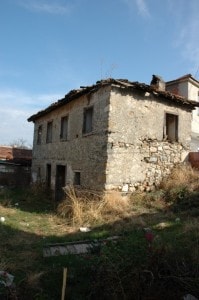
Stable or House? Actually neither, it no longer exists, it got knocked down! I tried to buy it years ago but the owners couldn't agree on a price, it is now a pile of rubble!
Deed issues normally revolve around confusion over what the building on a given piece of land actually is. Just because its stone and looks like it has been there forever and some one is living in it doesn’t mean it’s a house. And just because it has a garden with a wall around it doesn’t mean it belongs to the house or indeed that the house you are looking at is a standalone property on a single deed and not a part of a larger deed including other houses and more land. Essentially, for the foreign buyer wanting clarity it has to say house on the title deeds. Not stable, or store, or even just garden (bahce), it has to say house.
If you want to be particularly picky – as I was with my house – you can trace how long it has been an inhabited house in the old ledgers at the Cadastral. For example, my title deeds have been traced back to 1958 when Ataturk’s mapping engineers arrived in the village as part of their herculean mission to map the whole of Turkey onto new title deeds from the old Ottoman deeds. At that moment in 1958 this property I live in was an inhabited house on 208m2 of land. That’s about as rock solid as it gets.
Once you establish that the house you want to buy is actually a house you then need to see how many owners it has and here we come across the second problem. The multiple owner syndrome.
Due to Turkey’s complex inheritance laws it is tough to find an old property with a single owner to negotiate with. Properties are often owned by multiple family members in all corners of Turkey and even the world, and you need the agreement of all of them before a purchase can be agreed.
With both of my village purchases I was dealing with one owner but even that can be fraught as when we were buying the property that became The Muses House the owner’s brothers came along to the tapu office at completion of the sale to be sure she was getting the best price and at the last minute it looked like it could all go wrong.
That is the fundamental problem with multiple owners, or indeed the families of individual owners, someone will always think they can get a better price for the property, especially if the buyer is a foreigner (all of whom are very very rich!). And so negotiations can flounder because Brother A went to the tea shop to celebrate selling a crappy old house and his mates told him he was a fool to accept the offer, he could get more, whilst Brother B who really wants to get married will take any offer given. Brothers A and B will normally end up fighting in the street about it and the whole thing falls apart.
I have been lucky both times, but then on both occasions I was buying I was taking my time, I wouldn’t spend any money on anything until everything was signed, I would go from agreement to signing in a day (which you can’t do now) and I had spent weeks and weeks finding the right people to buy from in the location I wanted. If you want legal you have to put the legwork in, a week long buying trip in the koy lands is a waste of time and likely to result in ulcers as all your potential purchases fall through once you go home.
So why buy if it’s so hard?
I could just say read the rest of this site, but that would be only half the picture. I bought and renovated property in the koy lands for so many reasons it would take forever to explain and a lot of it is to do with me and how I see the world.
I believe that doing difficult and complex things makes life worth living, I believe old houses should be saved not knocked down and rebuilt in tugla, I believe the lifestyle here taught me things I needed to learn, I believe if it was easy everyone would do it and it wouldn’t be so special.
And as to living in the village, I got to meet amazing people and really learn about a way of life that in many other countries is passing into history. I found a peaceful place, where you can hear yourself think, and I found the real Turkey away from the resorts and I got to bring other people to see it and experience it and that’s important to me.
This all sounds very complicated, is there an easier way?
Of course there is, but they’re not safe. You can put your property into a Turkish person’s name. But then you won’t really own it, and if he gets knocked over by a dolmus you’re in trouble. Or if he gets taken to court for anything at all your property is at risk as it is his asset and people get taken to court in Turkey at the drop of a hat. Or you could put it into a trust and take out a lease on your own home, and if you think land laws in Turkey are difficult just take a look at trust laws!
If you want to do it, do it properly. It is possible, it just requires you learn a few things, have a sound reason for doing it and are patient. You also need to take advice from the right people – not me, I don’t do free advice anymore, I find people rarely listen and the whole thing puts my blood pressure up. At this juncture also please see – Weird Advice for living in Turkey – you’re probably too old to be adopted
If you do make it over the hurdles to owning in the koy lands you will own something special, something you really worked to acquire, something very few foreigners have managed and hopefully something that will still be here long after you have gone. Because when the complexes on the beaches have crumbled to dust and the summer houses have sunk into the marsh ground they were built on and the tower blocks have fallen in the quakes to come the stone houses in the koy lands will still be here…..six hundred years and counting so far.
Please Note:- This article was written in 2011 and since August 2012 there are some changes to the foreign buying laws which impact on people wanting to buy in the villages in Turkey. The changes do not give foreigners carte blanche to buy anything but certain properties are now available for private ownership.
If you are interested in owning an income generating property in a village in Turkey please see our house for sale at Kirazli Village House for sale
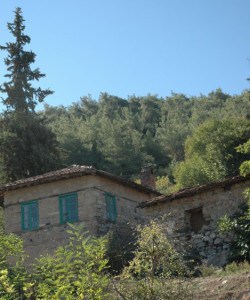
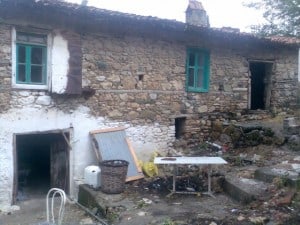
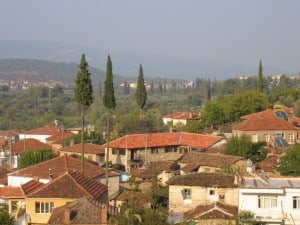
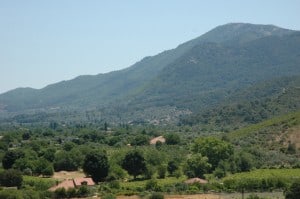
elinize sağlık çok güzel yazı
Please send me more information about your property. I am in interested.
Hi, there’s more information about my house on this link Kirazli Village House for Sale Karen
hi karen nice speaking to you this morning from irl nice to read your post on property its messy in kus but above senario sounds complicated take care
Hi John, nice speaking to you too. All property abroad is complicated but the biggest problem is that nobody explains the whole process clearly. In Western Europe we’re used to passing the whole thing onto a lawyer and leaving him to get on with it with occassional phone calls to complain about how long it’s taking. We don’t need to know what he is actually doing. When you buy abroad you can’t really do that, you have to understand the process and a lot of emlaks don’t explain it because they lack the language or they can’t be bothered or they don’t understand it themselves. So things go wrong because buyers don’t really know what they are getting involved in and can’t keep tabs on the risk areas and when it does go wrong they are confused as to why and how to correct it. I’ve always tried to explain everything in terms people can understand and I’ll keep going back over it (ad nauseum) until either I find an analogy they can relate to or the light dawns 🙂 I couldn’t cope with the residual guilt of not having explained something properly! Karen